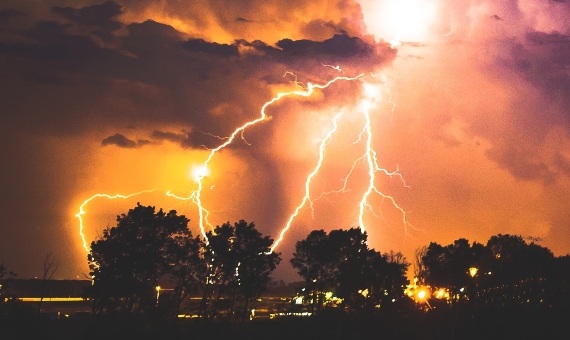More than merely discovering a new geometrical dimension with incredibly beautiful shapes or a way to possibly describe complex natural processes, Benoit Mandelbrot knew that fractals could be immensely useful to numerous scientific fields. If an essential structure in nature is identified and the principles of fractal geometry are applied to decompose it, predictions about how the structure will act in the future can be made because fractals adhere to the mathematical principle of self-similarity (they are identically replicated at different scales, countless times).
Using this idea as a starting point, it can be understood how the study of fractals today is being put to use to prevent further climate change, cancer from gaining ground, or the geological process cycles associated with the San Andrés fault. What has been called “the Thumbprint of God” sheds light on very complex processes through seemingly simple mathematical formulas (Z = Z² + C).
A hidden code in biological processes
If interactions between atoms occur in accordance with fractal geometry’s principle of self-similarity, it would be possible to explain many complex natural phenomena using this mathematical basis. In mathematical terms, fractals cannot predict exactly how major events in chaotic systems will act , but they can tell us, de facto, that these events are going to happen.
Human health: cancer, cardiology, and lung physiognomy
For centuries it has been thought that the human heart beats regularly and linearly, but more recently it has been proven that there is a specific fractal pattern to the beating of a healthy heart. Researchers at Harvard Medical School have shown that alterations in the fractal scale can be the root cause of pathophysiological changes, including the syndrome of sudden cardiac death.

Fractals could also explain how the gas exchange surface of lungs (organs that echo the shapes of these same patterns) are ventilated homogeneously in a process that optimizes how energy is used, following a given fractal pattern. So, is fractal geometry, then, a kind of biological design principle that programs us to function as efficiently as possible? If so, one of its most promising (and universal!) applications is to detect when that optimal programming will fail, becoming a powerful diagnostic tool, far more than any machine. Thus, in cancer treatments, for example, fractal geometry can be used to identify tumors’ pathological architecture and their growth mechanisms.
Ecology, nature, and the environment
Looking beyond the biology of the human body, but within our plant’s biology, fractal patterns can also be detected in natural phenomena as seemingly unrelated as earthquakes, mineral fragmentation processes, the flow of rivers, or the swarm behavior of flocks of birds. Furthermore, fractals are used in ecology to quantify how much CO2 forests can process, and they can even be used to study how forest fires spread.
Earth, the universe, and physical phenomena
Mandelbrot was an expert it orography and the shape of Earth’s continents, and he concluded that the degree of coastal irregularity, vertical reliefs, the distribution of the islands as a part of the continental profile, all suggests that the Earth’s surface is statistically self-similar.

Therefore, if our planet responds to fractal design principles, it is logical to consider that the universe to which it belongs also does. Fractal mathematics are thus used to study different physical phenomena such as the curvature of space-time, something Euclidean geometry could not explain, as Albert Einstein postulated in his personal battle with mathematics.
In astrophysics, fractals are used to analyze star formations, because interplanetary dust clouds (just like rain clouds) also conform to the principle of self-similarity, with irregular but recurring patterns. it is then understandable that the development of technologies that depend on physical phenomena, like telecommunications, also put fractal concepts to use in order to optimize their performance. For example, antennas are designed based on this mathematical foundation in order to reach a wider range of frequencies and are common in wireless devices.
In addition to phenomena that humans have discovered in biology and on Earth, fractal mathematics can also be applied to man-made processes, such as finances, the stock market performance, or musical compositions. Where then is the limit to this infinite source of wisdom?
Comments on this publication